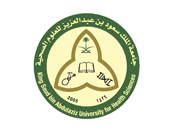Blended Learning in Anatomy Teaching for Non-Medical Students: An Innovative Approach to the Health Professions Education
Abstract
Purpose: Anatomy is a basic science for health professions curricula. Recent research suggests that the innovative blended learning approach (classroom learning plus use of online learning) outperforms conventional didactic teaching by facilitating effective learning. This study explores the feasibility of adopting blended learning in anatomy teaching and evaluates the learning experiences of students. Method: Courseware called electronic Professional Study (ePS) was developed and used for teaching anatomy of the cardiovascular system for non-medical students. ePS composed of three condensed, recorded course lectures, revision guides, and gamified quizzes. These were placed on the Web platform for students to watch before didactic lecture. Scheduled class periods were dedicated to participating in active-learning exercises. By the end of the academic semester, the courseware evaluation was implemented using a set of 5-point Likert scale questions. The e-questionnaire was distributed to a convenience sample of Year-2 full-time undergraduate students majoring in pharmacy enrolled in an introductory course in anatomy and physiology. Multiple linear regression was conducted to examine the relationship between courseware usage and examination results. Results: All enrolled students (n ¼ 53) completed and returned the questionnaire. About 38% used the courseware less than ten times during the semester, and 7.5% never used it. e-Questionnaire shows that a majority agreed that the courseware content was clearly presented and easy to navigate. Multiple regression shows that courseware usage did not contribute significantly to the performance. Conclusions: Blended learning was perceived positively by most students. However, no effect on learning could be established.
Recommended Citation
Yung Ngan, Olivia Miu; Tang, Taylor Lik Hang; Chan, Aden Ka Yin; Chen, Daisy Minghui; and Tang, Mei Kuen
(2018)
"Blended Learning in Anatomy Teaching for Non-Medical Students: An Innovative Approach to the Health Professions Education,"
Health Professions Education: Vol. 4:
Iss.
2, Article 11.
DOI: 10.1016/j.hpe.2017.11.001
Available at:
https://hpe.researchcommons.org/journal/vol4/iss2/11



